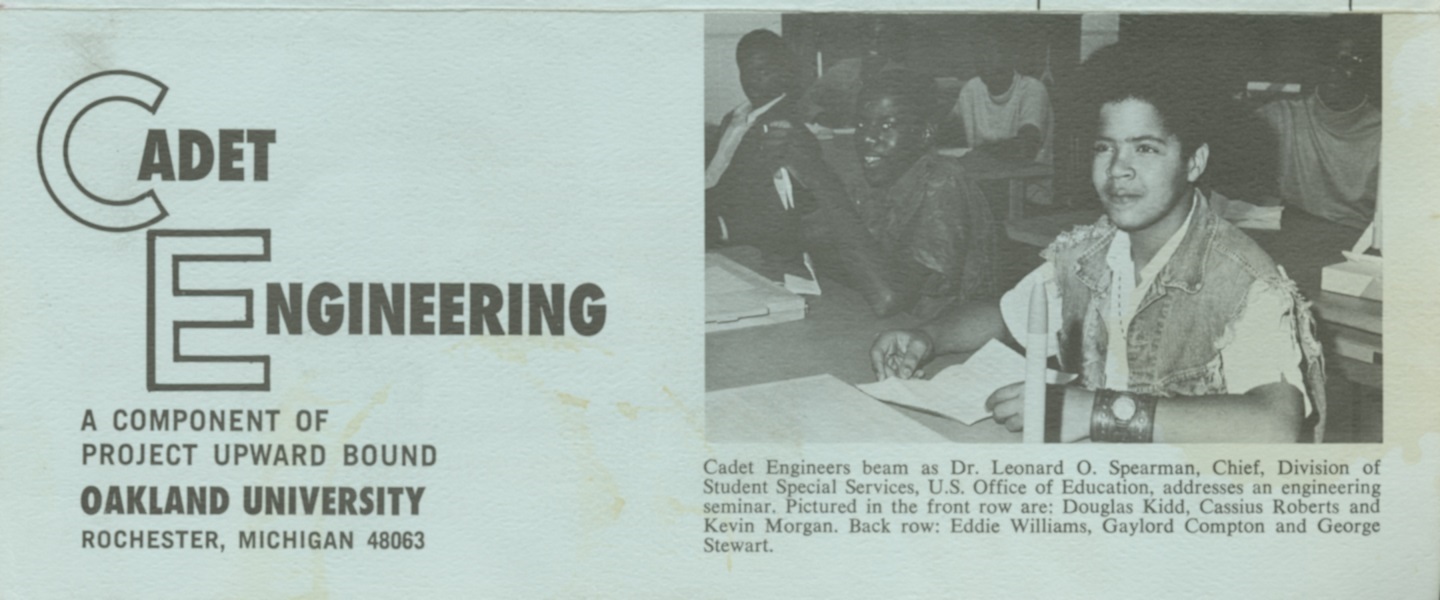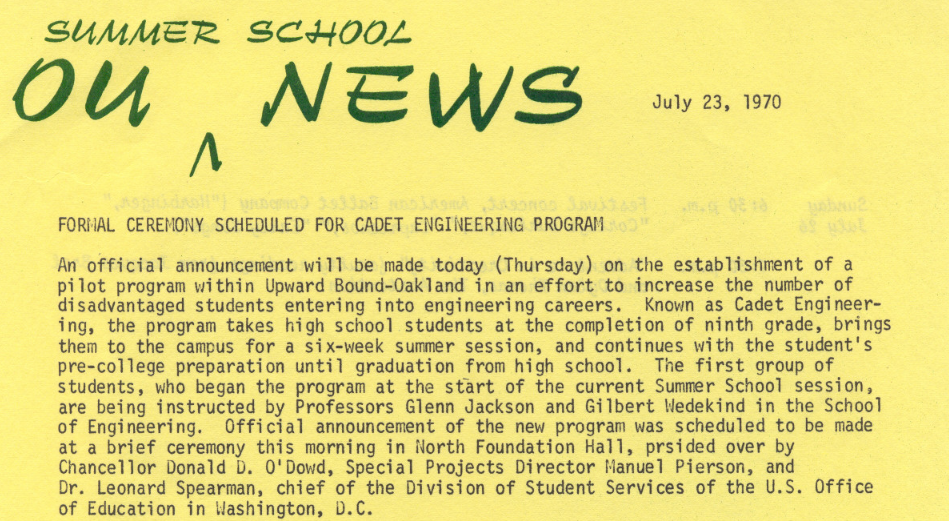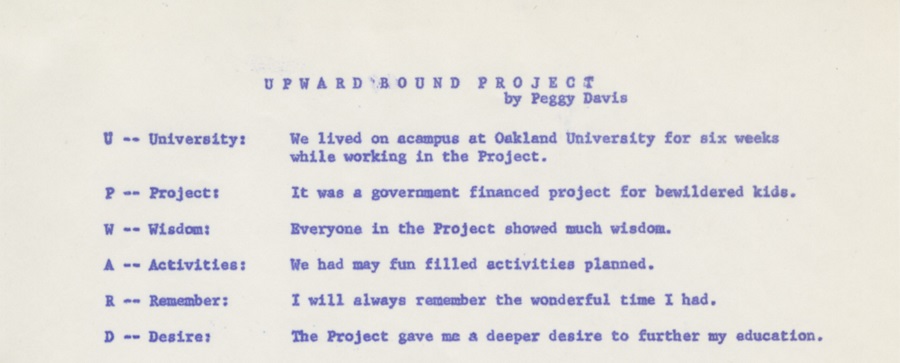The Cadet Engineering Program (1970-1982)
- Origins
- Objectives
- The Charter Class
- The Curriculum
- Impact
- For More Information
The Cadet Engineering program was a ground-breaking program for under-represented youths from local high schools. It was initiated by OU’s School of Engineering in 1970.
The goal was to encourage 9th-grade students to pursue a college education in engineering by offering basic math and science instruction applied to practical engineering problems.
Origins
The idea was born during a drive to Lansing to appear before the Michigan Senate Appropriations Committee in 1967- when Manuel Pierson, Associate Dean of Students, and John Gibson, Dean of the School of Engineering, discussed ways to recruit more African American students in engineering.
In the next three years Pierson and Gibson approached foundations and governmental agencies for support. Finally, at a spring 1970 meeting with senior officials at the Department of Health, Education and Welfare’s Division of Student Special Services in Washington, OU secured funding. James Bullock, then Area II Director of Upward Bound in the Division, was a strong supporter of the proposal.
Such a program was a first in the United States: helping African American high school students embrace engineering had never been attempted.
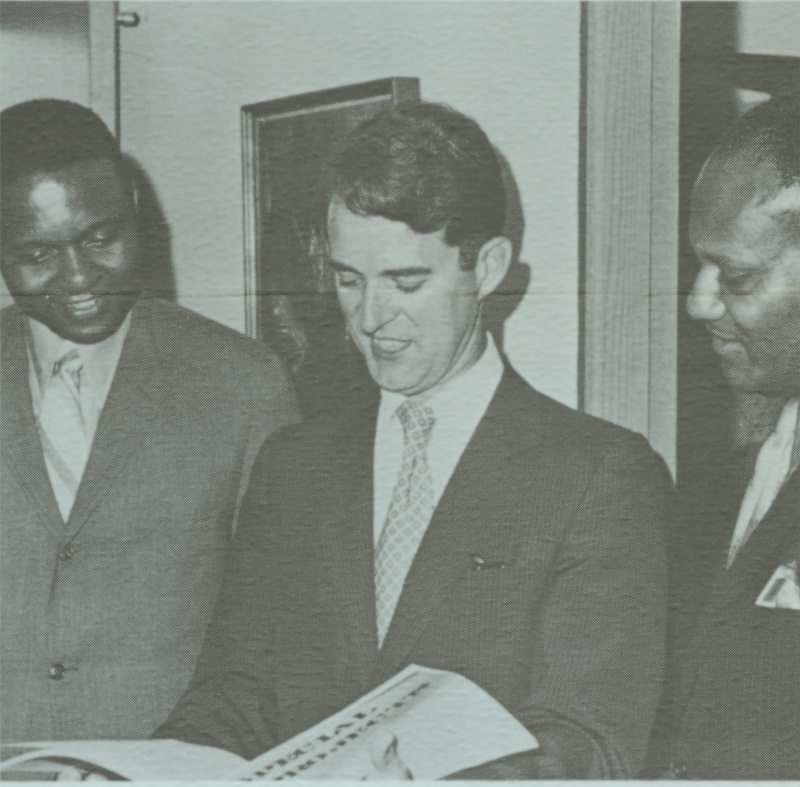
President O'Dowd (center) reviews the Cadet Engineering grant award . Dr. Leonard Spearman, Chief of the Division of Student Special Services of the US Office of Education (left) and Manuel Pierson, look on.
However, because the Upward Bound program, of which OU’s Cadet Engineering program would be part, was under political fire at the time and was experiencing budget cuts, officials asked OU not to publicize it.
--------
Credits
All documents and images are from Manuel Pierson's Papers and other collections at the Oakland University Archives.
Exhibit prepared by Dominique Daniel, February 2019
Objectives
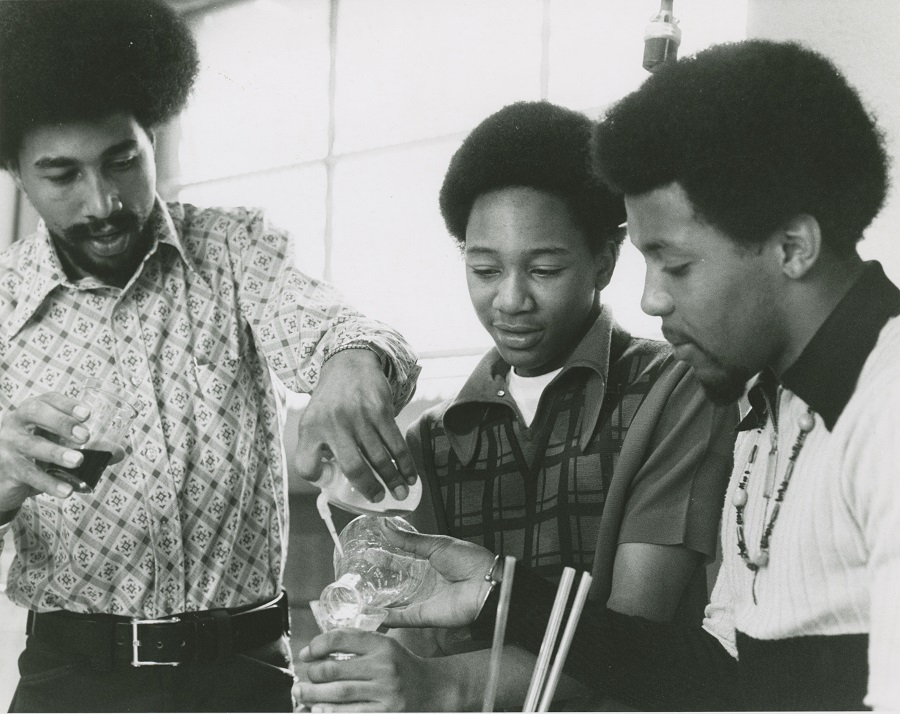
Pierson and Gibson both had a keen awareness of the racial imbalance in the engineering profession in the U.S, and shared a desire to help remedy what they saw as injustice.
At the same time they welcomed the opportunity to diversify OU’s student population.
The underlying rationale for the program was that some potentially gifted students were unable to attend engineering school because of “social and cultural deprivation” or because they lacked money to finance their college education.
The Charter Class
The first cohort was recruited from 9th graders at local schools for the summer of 1970. 25 students were selected from over 200 applicants.
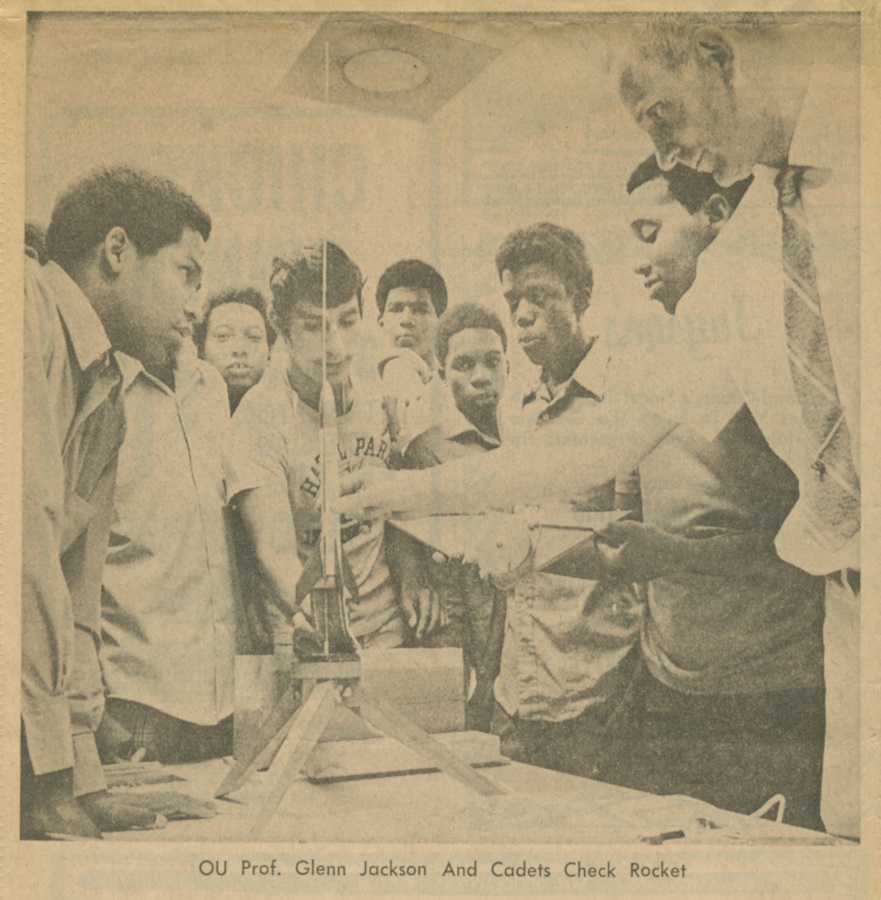
(from the Pontiac Press, July 30, 1970)
OU deliberately targeted students at the end of the 9th grade, because of limited opportunities in some local high schools. As OU staff put it,
“the overcrowded conditions of most urban high schools make individual reading instruction impossible.”
"the general community atmosphere [was] not conducive to developing engineer-oriented students."
To be admitted, students had to be eligible for the Upward Bound program and demonstrate potential for college through high scores on numerical competency tests in a major area.
Out of the 25 selected students, 21 were African Americans and 2 were Hispanics.
They came from:
- Detroit (8)
- Pontiac (6)
- Oak Park (4)
- Ypsilanti (3)
- Ferndale (2)
- Hazel Park (2)
In Pierson's words, they were the “unsought and often untaught.”
He was impressed by these 14 to 16-year-olds, noting their “high interest in abstract reasoning ability, mechanical reasoning ability, numerical ability.”
Several came from families receiving federal assistance (Aid to Families with Dependent Children) and many lived in public housing.
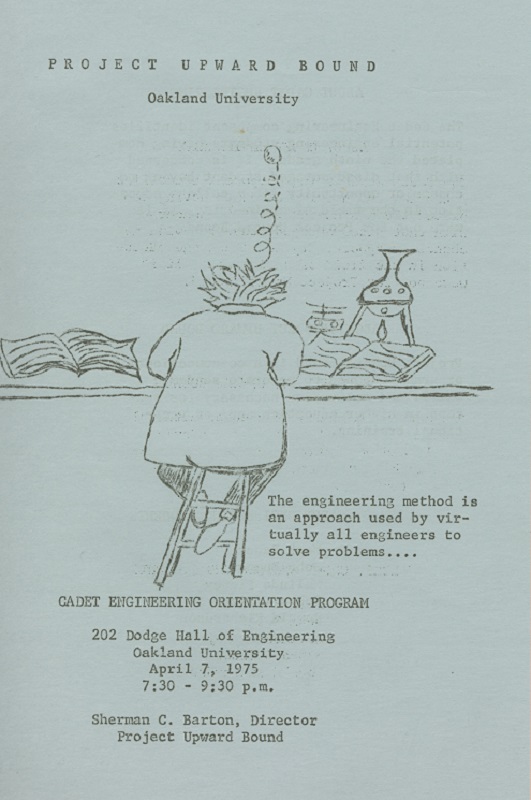
---
Quotation sources:
Student Services, Program Change Request and Cadet Engineering memo, folder "Upward Bound - Cadet Engineering Program, 1969-1971," box 12, Manuel Pierson Papers, Oakland University Archives.
.
The Curriculum: “introduce, study, build and test”
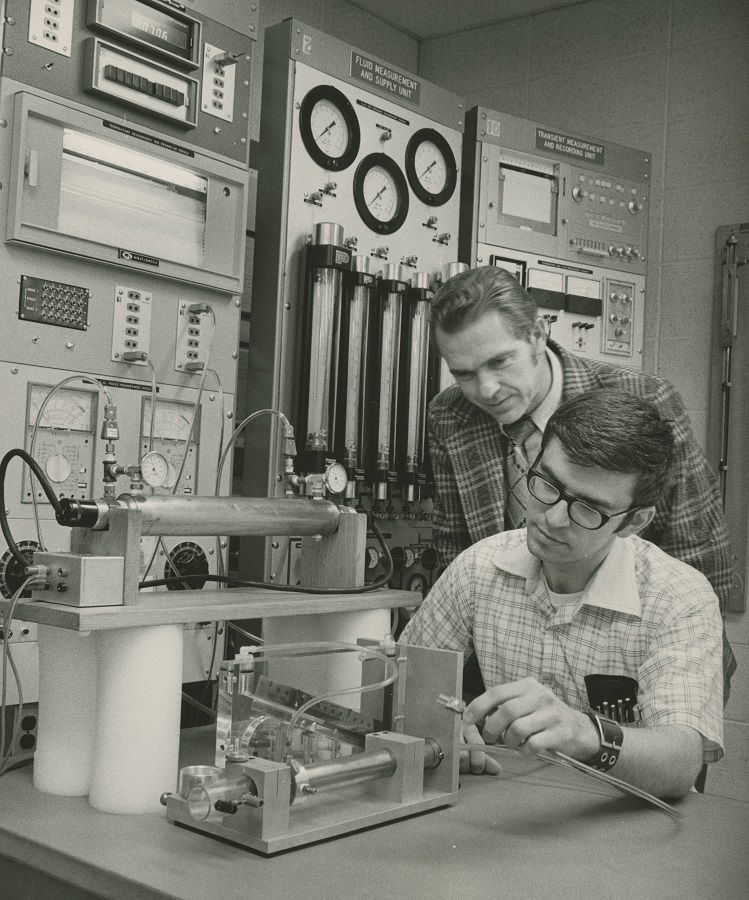
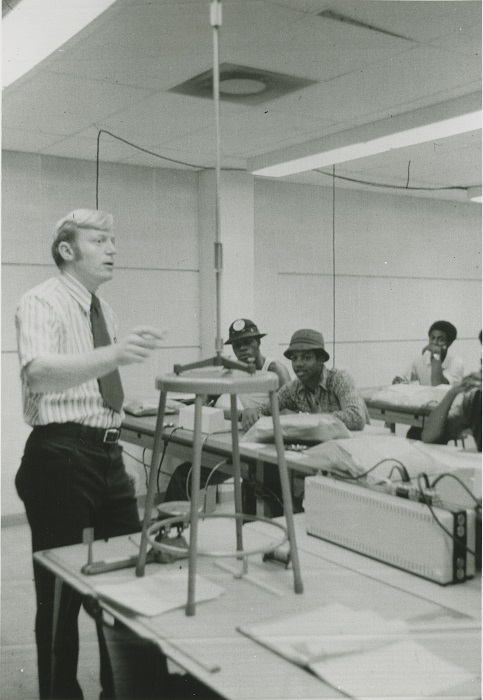
Professors Wedeking and Jackson
The Cadet Engineering program consisted of a 6-week residence at OU in the summer, with monthly follow-ups during the following academic year.
The summer school and monthly follow-ups were repeated every year until the participating students’ high school graduation.
During the summer of 1970 the 25 students were divided in two sections, headed by OU professors Glenn Jackson and Gilbert Wedekind. They were assisted by undergraduate assistants and a high school teacher.
Pedagogy
Jackson and Wedekind relied on two pedagogical principles:
- motivation (so that the program would act as a catalyst for motivating students to make better use of their high school opportunities)
- a close student/teacher relationship.
The 2 instructors wanted to introduce engineering through “laboratory and/or real world examples.” Thus, they hoped to generate in their students a desire to investigate the theory behind that concept or law.
In short, their pedagogy was based on “introduce, study, build and test.”
They also favored active involvement through students discussions.
The program alternated lecture, lab work, and homework.
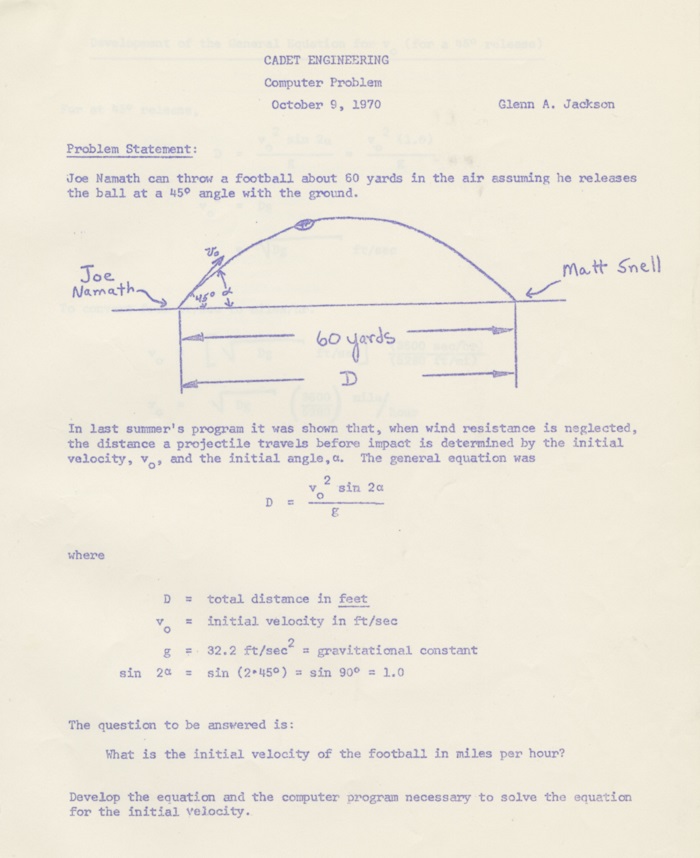
Classes
Subjects included "graphical analysis, geometrics, mechanics, and technical skill development, and a review of basic algebra." Students also took a communications skills course, taught by Upward Bound staff at OU.
Instruction was conducted every day from Monday to Thursday for 5 hours. On Fridays, participants were taken on field trips. During evenings and weekends they could enjoy supervised recreational and sports activities. For example, they visited Cranbrook’s Science Museum and Planetarium.

Thus they constructed and launched model rockets while introducing the concepts of trajectories, thrust, velocity and acceleration.
After the experiment and data gathering, students discussed s whose rocket went the highest and other related questions. Later on, instructors introduced the same questions in different ways (in hopes that repetition would lead to reinforcement). The goal was to introduce the topic as naturally as possible and to give students a “need to know” sense.
The second year of the program, the same students returned. This time, the main objective was to introduce them to “engineering things” -- especially in electricity and fluid mechanics. The level was much higher than the year before and the students were pushed harder.
For 3 summers, through their high school years, the first cohort continued to attend the cadet engineering program. Between summers they also visited OU one Saturday a month to study maths and engineering related subjects. The same professors stayed with the students the entire time.
On the 4th year, when the students graduated from high school, they spent 8 weeks at OU taking up up to 8 credit hours of specially designed courses -- one of them a pre-engineering course taught by regular engineering faculty.
Every year after that, a new cohort was selected, with 15 students on average.
---
Source:
"Cadet Engineering: A Hope," OU News, March 15, 1971
Impact

Upward Bound student at OU, early 1970s
The first cohort was quite successful.
The attrition rate was low. 18 of the original 25 students completed the program, and 9 were admitted to OU’s School of Engineering. The others enrolled in other universities.
Edward Hewlett, a graduate of Detroit’s Northern Senior High School, enrolled at OU in 1974 with a Black Scholarship Award and an OU Student Life Scholarship.
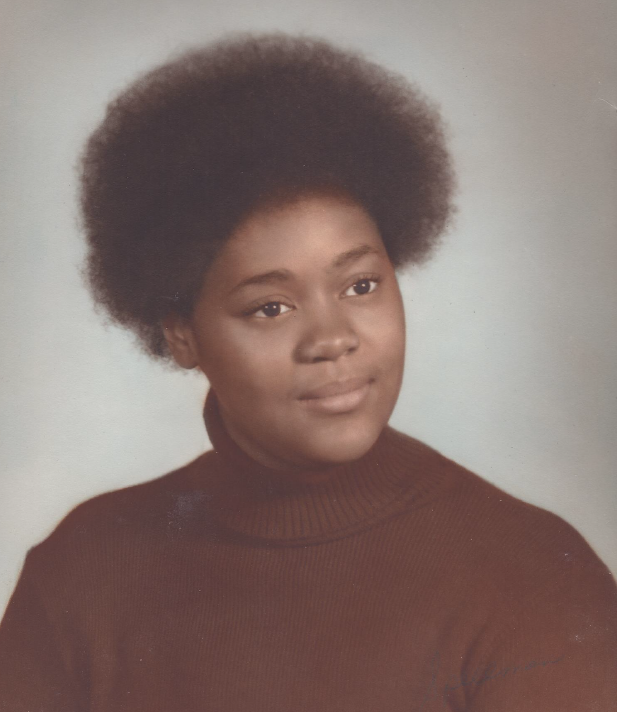
Credits: Dawn Wilson
Dawn Wilson, one of only two female students in the charter class, attended Georgia Tech and Tuskegee University and became a mechanical engineer.
Pierson and the professors all noted that the program succeeded in generating and sustaining motivation, interest, and enthusiasm.
Students were encouraged to write about their Cadet Engineering experience and share them. Here are some student comments:
"Thank you for the most wonderful time of my life."
"College is where you go to learn magic."
"College is excitement - of new ideas, books, associates, histories and horizons"
The very conditions of the program's success created long-term challenges.
Both OU and selected students committed themselves to several years of hard work. The goal, for each cohort, was to bring participants to high school graduation and on to higher education.
But it was hard to sustain funding as government support weakened. Lots of resources were needed to maintain the winning features of the program -- a low student-teacher ratio (12 to 1) and the same dedicated professors.
In the long run, the program did little to increase minority enrollment at OU because many of its graduates did not enroll there.
Only about a dozen black students graduated from the Cadet Engineering program between 1975 and 1982 (Report of the Committee on Academic Mission and Priorities of Oakland University, 1982 )
But many went on to successful studies at other institutions, as stated by Provost Kleckner in 1985. The program had ended by then, due to lack of sufficient financial support.
For More Information
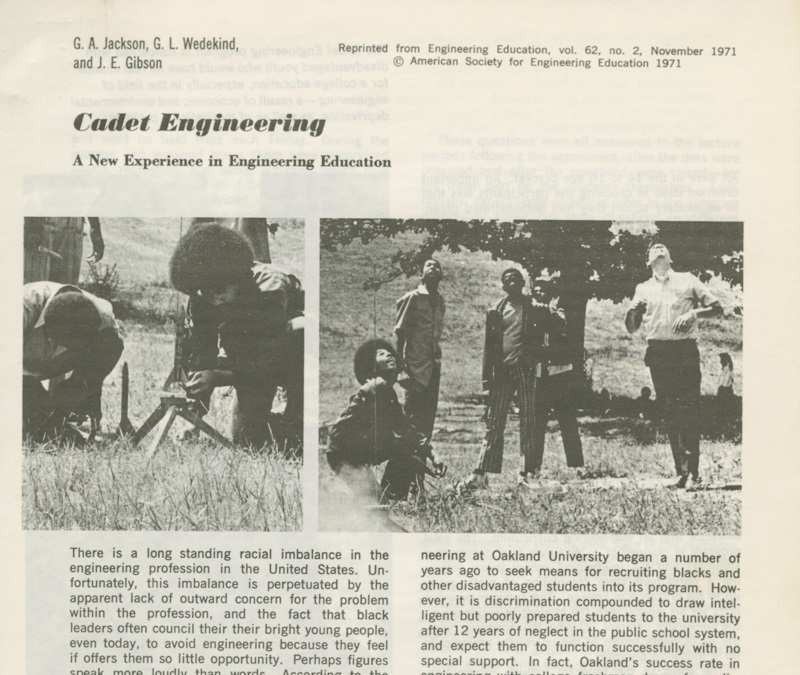
Glenn A. Jackson, Gilbert L. Wedekind, and J. E. Gibson, "Cadet Engineering: A New Experience in Engineering Education," Engineering Education (Nov. 1971): 110-113.
Glenn A. Jackson and Gilbert L. Wedekind, “Cadet Engineering: Five Years of An Experimental Program,” Engineering Education (Feb. 1976): 433-434.
School of Engineering, Oakland university," Minority Engineering Program," in Building Effective Minority Programs in Engineering Education, ed. Committee on Minorities in Engineering, Assembly of Engineering, National Research Council (Washington, DC: National Academy of Sciences, Sept. 1975), p. 86.
Manuel Pierson Papers, folders "Cadet Engineering", box 12, Oakland University Archives.
In providing access to its collections, the Oakland University Archives and Special Collections acts in good faith. Despite the safeguards in place, we recognize that mistakes can happen. If you find on our website or in a physical exhibit material that infringes on an individual’s privacy, please contact us in writing to request the removal of the material. Upon receipt of valid complaints, we will temporarily remove the material pending an agreed solution.





